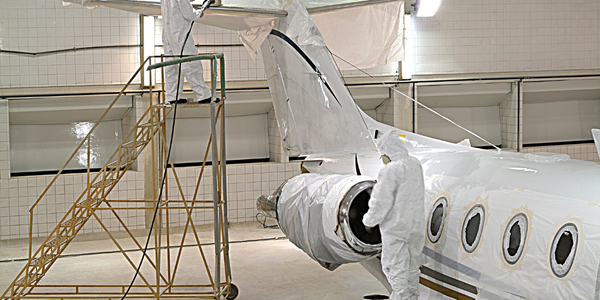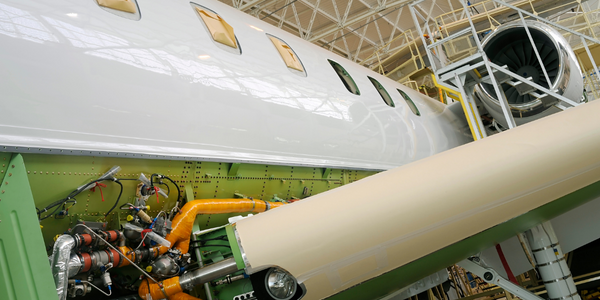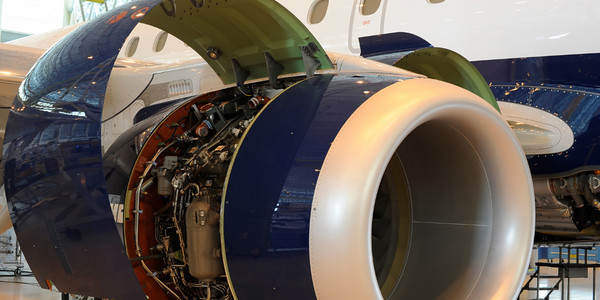Technology Category
- Application Infrastructure & Middleware - Middleware, SDKs & Libraries
- Functional Applications - Manufacturing Execution Systems (MES)
Applicable Industries
- Aerospace
- Cement
Applicable Functions
- Procurement
- Product Research & Development
Use Cases
- Additive Manufacturing
- Inventory Management
About The Customer
GE Aviation is a leading provider in the Aerospace and Defense industry with 48,000 employees and a revenue of $10.2 billion. The company set a company-wide vision to advance state-of-the-art product cost management technologies. They aimed to build a business culture where everyone was focused on product cost and had the tools to do so. However, they faced challenges around cost data and departmental silos. They needed a solution that would consolidate and streamline cost data, break down silos, and provide the right cost estimation tools for different phases of the product life cycle.
The Challenge
GE Aviation, a leading provider in the Aerospace and Defense industry, aimed to advance their product cost management technologies. The company wanted to build a business culture where everyone was focused on product cost and had the tools to do so. However, they faced challenges around cost data. The data was available but was hidden among disparate and discrete systems, making it difficult for users to access and utilize the right information. Additionally, the company struggled with departmental and organizational silos, which led to connected handoffs and interdependencies that cost valuable time and money. The company needed a solution that would consolidate and streamline cost data, break down silos, and provide the right cost estimation tools for different phases of the product life cycle.
The Solution
GE Aviation turned to aPriori to build product cost models for more than half of their products to automate product costing. The first step was to create a data lake, bringing all the disparate information together and making it accessible to the entire team. They then worked on stitching the data together and publishing data sets so that the data is usable in the lake. Data cleanup and sourcing were also critical elements to their process. To break department silos, GE created a culture around product cost management which included representatives from design engineering, commodity buyers, manufacturing engineers, and cost analysts. They also implemented an automated approval process which enabled their domain experts to pass their stamp of approval on designs, data, and costs before they moved forward. Security protocols were also put in place to ensure the safety of their defense and commercial programs.
Operational Impact
Quantitative Benefit

Case Study missing?
Start adding your own!
Register with your work email and create a new case study profile for your business.
Related Case Studies.

Case Study
System 800xA at Indian Cement Plants
Chettinad Cement recognized that further efficiencies could be achieved in its cement manufacturing process. It looked to investing in comprehensive operational and control technologies to manage and derive productivity and energy efficiency gains from the assets on Line 2, their second plant in India.

Case Study
Airbus Soars with Wearable Technology
Building an Airbus aircraft involves complex manufacturing processes consisting of thousands of moving parts. Speed and accuracy are critical to business and competitive advantage. Improvements in both would have high impact on Airbus’ bottom line. Airbus wanted to help operators reduce the complexity of assembling cabin seats and decrease the time required to complete this task.

Case Study
Aircraft Predictive Maintenance and Workflow Optimization
First, aircraft manufacturer have trouble monitoring the health of aircraft systems with health prognostics and deliver predictive maintenance insights. Second, aircraft manufacturer wants a solution that can provide an in-context advisory and align job assignments to match technician experience and expertise.

Case Study
Aerospace & Defense Case Study Airbus
For the development of its new wide-body aircraft, Airbus needed to ensure quality and consistency across all internal and external stakeholders. Airbus had many challenges including a very aggressive development schedule and the need to ramp up production quickly to satisfy their delivery commitments. The lack of communication extended design time and introduced errors that drove up costs.

Case Study
Accelerate Production for Spirit AeroSystems
The manufacture and assembly of massive fuselage assemblies and other large structures generates a river of data. In fact, the bill of materials for a single fuselage alone can be millions of rows of data. In-house production processes and testing, as well as other manufacturers and customers created data flows that overwhelmed previous processes and information systems. Spirit’s customer base had grown substantially since their 2005 divestiture from Boeing, resulting in a $41 billion backlog of orders to fill. To address this backlog, meet increased customer demands and minimize additional capital investment, the company needed a way to improve throughput in the existing operational footprint. Spirit had a requirement from customers to increase fuselage production by 30%. To accomplish this goal, Spirit needed real-time information on its value chain and workflow. However, the two terabytes of data being pulled from their SAP ECC was unmanageable and overloaded their business warehouse. It had become time-consuming and difficult to pull aggregate data, disaggregate it for the needed information and then reassemble to create a report. During the 6-8 hours it took to build a report, another work shift (they run three per day) would have already taken place, thus the report content was out-of-date before it was ever delivered. As a result, supervisors often had to rely on manual efforts to provide charts, reports and analysis.








